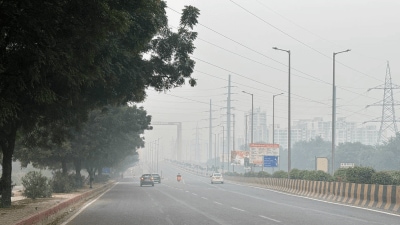A child on Death Row
The Juvenile Justice Act 1986 applies to children below the age of 16, in case of boys, and 18, in case of girls, and prohibits imposition...

The Juvenile Justice Act 1986 applies to children below the age of 16, in case of boys, and 18, in case of girls, and prohibits imposition of the death penalty on children for any offence committed by them. The Act is based on sound reasoning and experience. Children are more vulnerable to exploitation and abuse as also more amenable to reformation due to their physical and mental immaturity.
The Supreme Court on July 31 upheld the death sentence of Ramdeo Chauhan alias Rajnath Chauhan. Ramdeo, claimed before the session judge to be 15 years old on the date of the offence. However the session judge declared him to be 19 on the bases of surmises based on inconsistent oral testimony and rejecting cogent documentary and medical evidence. Shockingly, such a finding was not challenged by the legal aid lawyers representing his case before the High Court or the Supreme Court, despite the whimsical manner in which the session judge dealt with the evidence contrary to earlier Supreme Court decisions.
The offence in this case took place on March 8, 1992. Ramdeo’s date of birth was February 1, 1977, as shown in the school register provided before the session judge. There was no dispute that the entry related to the accused and it was made prior to the date of occurrence of the crime. According to this evidence he was 15 years old at the time of the commission of offence. The session judge, however, rejected this evidence on the ground that the basis of the entry was not known.
On the basis of physical and radiological examination done on December 23, 1997, pursuant to the order of the session judge, the doctor opined that Ramdeo was 20 or 21 years old. It reinforced the school record that he was 15 or 16 years at the time of the offence. The session judge did not rely even on this evidence.
The session judge relied on the oral testimony of the accused’s father for declaring Ramdeo to be 19 years old on the date of offence. Instead of rejecting the testimony as being inconsistent, he did various combinations and permutations on the basis of father’s own age, the age at which his children were born or were married to support his conclusion.
The session judge acted whimsically and also directly contrary to the directions of the Supreme Court in this respect. The apex court had once pronounced in a similar case the accused to be a juvenile on the basis of the school certificate as there was no evidence to show that it did not relate to the accused or that the entries were incorrect in their particulars. In 1989, the Supreme Court in Kumar Satyanand reiterated that where the age of the accused was a vital point for application of the social legislation regarding the trial of a child, where entry made in school records were available, they should be accepted as reliable and genuine. The entries having been made several years before, could not be disregarded on the ground that they had been created subsequently for the advantage of the accused. Only if such records were not available should a child be sent for medical examination, it had pronounced.
It is apparent that the session judge, in the latest instance, could not bring himself to let the accused charged with multiple murders be dealt with under the protective provisions of the Juvenile Justice Act. As a result a child is on Death Row today.
This case is a sad commentary on the standard of legal aid provided to the poor as also an instance of the grave miscarriage of justice. Justice demands that the Supreme Court should review this case to ensure that the law of the land is upheld.
The writer is reader, Faculty of Law, University of Delhi, and author of the book, `Treatise on the Juvenile Justice Act’



- 01
- 02
- 03
- 04
- 05




























